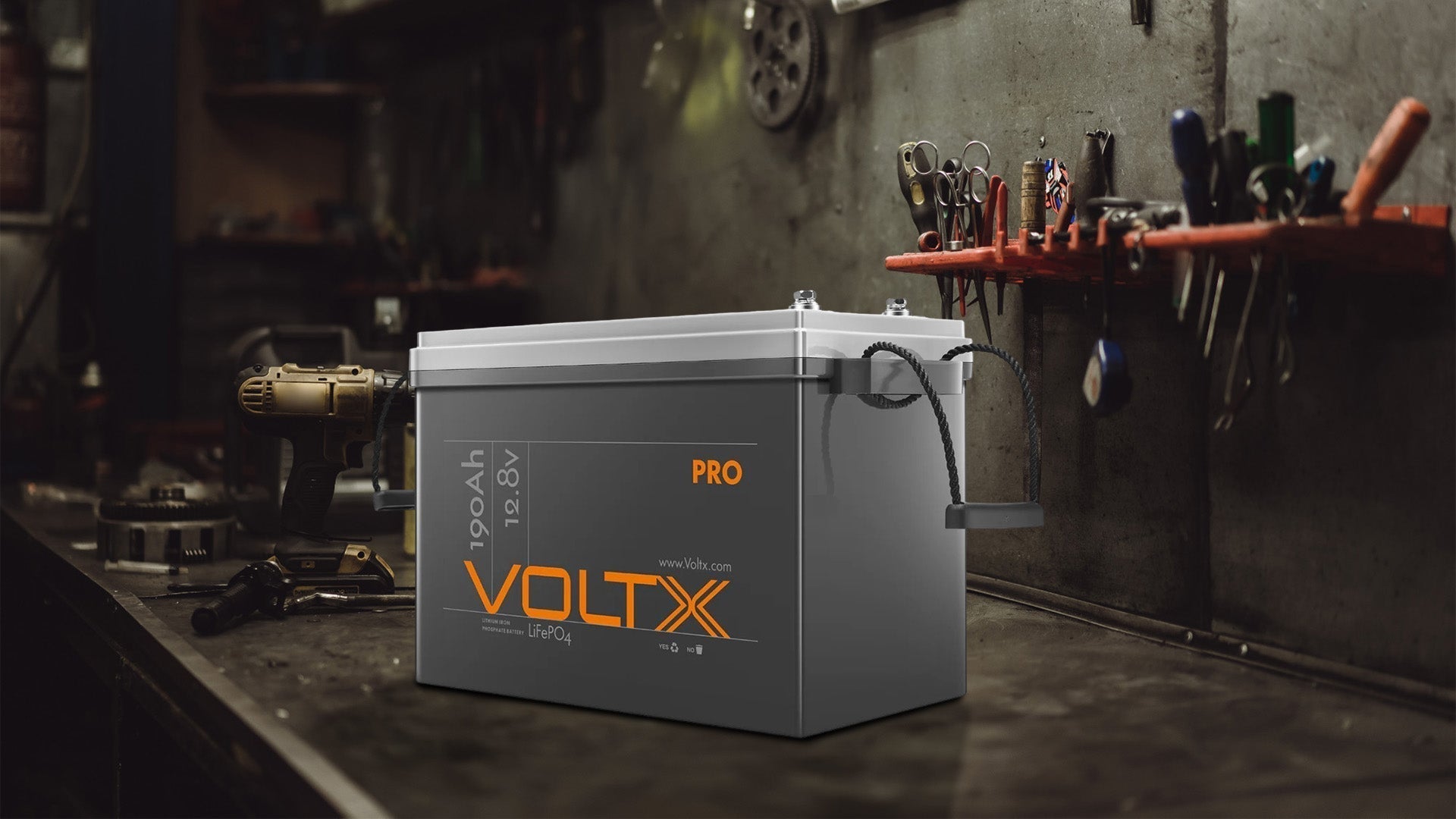Cooler months in Australia often mean your caravan, boat, or camping gear gets their well-earned break. If you’re planning to pack your lithium batteries away this winter, knowing the proper way is best. Proper storage, after all, is a part of LiFePO4 battery care to ensure battery longevity.
VoltX is an Australian company specializing in advanced LiFePO4 technology. We’ll cover the best LiFePO4 battery storage practices in this guide. Read on if you need help ensuring your battery's safety, performance, and longer life.
Step-by-Step: Preparing Your VoltX Lithium Battery for Winter Storage
Step 1: Clean and Inspect Thoroughly
Battery cleaning and terminal inspection are crucial battery maintenance steps before storing. First, disconnect your battery safely. Gently wipe off dust or dirt using a dry or slightly damp cloth.
Inspecting your lithium battery for damage before storage is also important. Never store a damaged lithium battery as it can pose serious risks. Check the terminals for corrosion and clean them if necessary.
Step 2: Achieve the Optimal State of Charge (SoC)
Avoid storing LiFePO4 at 100% charge of 0% but instead, aim for a 40-60% battery state of charge. It’s the optimal charge for storing a LiFePO4 battery, which reduces stress and self-discharge. Use a compatible charger to bring it to a safe level and don’t leave it plugged in. Yes, VoltX LiFePO4 batteries come with an advanced BMS, but good storage habits are key for long-term performance.
Step 3: Disconnect the Battery
One of the most important battery safety practices is battery disconnection. This will put it in standby mode safely and prevent parasitic drain, or power loss even when not in use.
How to disconnect the lithium battery for storage? It’s simple. Once charged, simply remove all connections, starting with the negative terminal first. Secure the cables away from the terminals. This is the generally recommended approach for LiFePO4 winter storage.
Step 4: Select a Suitable Storage Spot
The battery storage location is important when storing long-term. Avoid extreme temperatures for lithium battery storage. Instead, choose a cool, dry spot, ideally between 5°C and 25°C. Storing lithium batteries in the garage or shed in Australia is okay if it’s insulated.
Avoid spots that are too hot or exposed to direct sunlight. Safe storage also involves encouraging proper airflow. Ventilation is important to protect your lithium batteries from moisture.
Step 5: Understand Cold Temperature Considerations
While most storage locations in Australia usually don’t hit prolonged sub-zero temperatures, it’s important to know how freezing temperatures affect lithium batteries. Never charge a potentially frozen battery. If you must store it in a place that drops below freezing, wait until it warms up to at least 5°C before charging.
Fortunately, VoltX batteries have a built-in BMS with temperature protection. This often includes low-temperature cutoffs as an extra safeguard. However, avoiding the need for it is best practice.
Maintaining Your Battery During Storage
Yes, lithium batteries, when stored, have low self-discharge, but it’s smart to do periodic battery checks. Wondering how often to check stored lithium battery SOC? You can do it every 2-3 months or so.
When checking LiFePO4 battery voltage during winter storage, ensure it doesn’t drop below 30%. Top it up to around 50%, but only recharge when it’s above 5°C. Checking the battery charge now and then helps you ensure its health.
Store Smart, Power Up Faster
Proper LiFePO4 winter storage is pretty straightforward. You only need to make sure it’s clean, within appropriate SoC levels, fully disconnected, and stored in a cool, dry place. Then regular check-ins throughout winter to ensure it still has enough charge. By following our battery winterisation tips, you can extend battery life and enjoy reliable battery power from your lithium batteries once the warmer weather returns.
Need more specific advice for your setup or VoltX battery model? Reach out to our team of experts. Getting ready for the season? Explore our range of premium LiFePO4 batteries and essential accessories. .
Frequently Asked Questions
What is the best temperature to store lithium batteries over winter in Australia?
A: Aim for a cool, stable environment, ideally between 5°C and 25°C. Avoid direct sun, high heat, and locations prone to freezing temperatures.
Should I fully charge my LiFePO4 battery before winter storage?
A: No. Unlike older types, store LiFePO4 batteries partially charged, ideally between 40-60% State of Charge (SOC), to minimise degradation.
Can I leave my lithium battery connected in my caravan/boat during winter?
A: It's generally best to disconnect the battery to prevent parasitic drains from slowly depleting it. Clean and store it separately if possible.
How often should I check my stored lithium battery in winter?
A: Check the voltage or SOC every 2-3 months. Top up partially (to 40-60%) if it drops significantly, ensuring the battery is warm enough (>5°C) before charging.
Does cold weather damage LiFePO4 batteries during storage?
A: Storage in typical Australian cold is generally fine. The main danger is charging the battery when its temperature is below 0°C, which causes permanent damage. Always warm a potentially frozen battery before charging.








